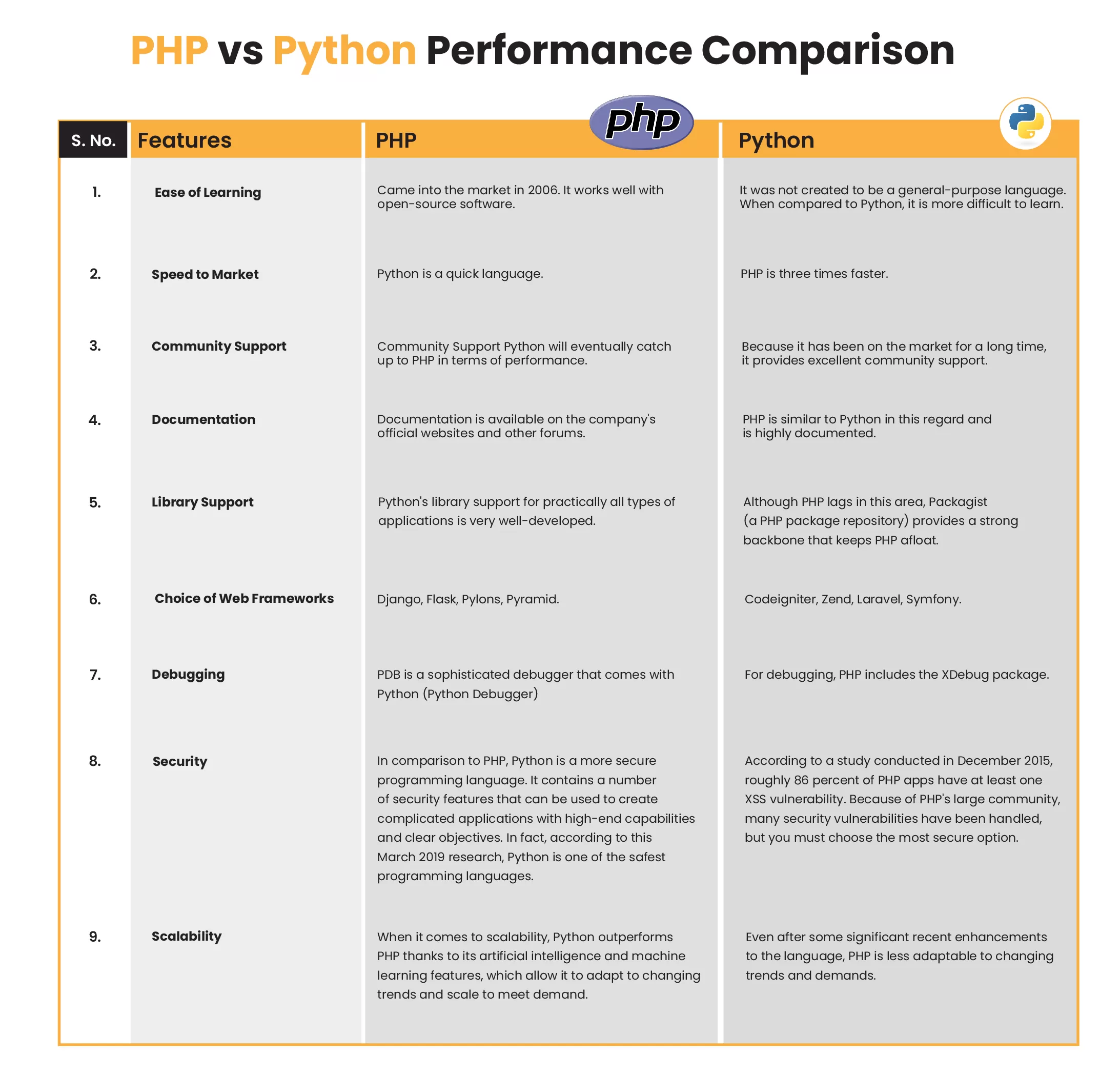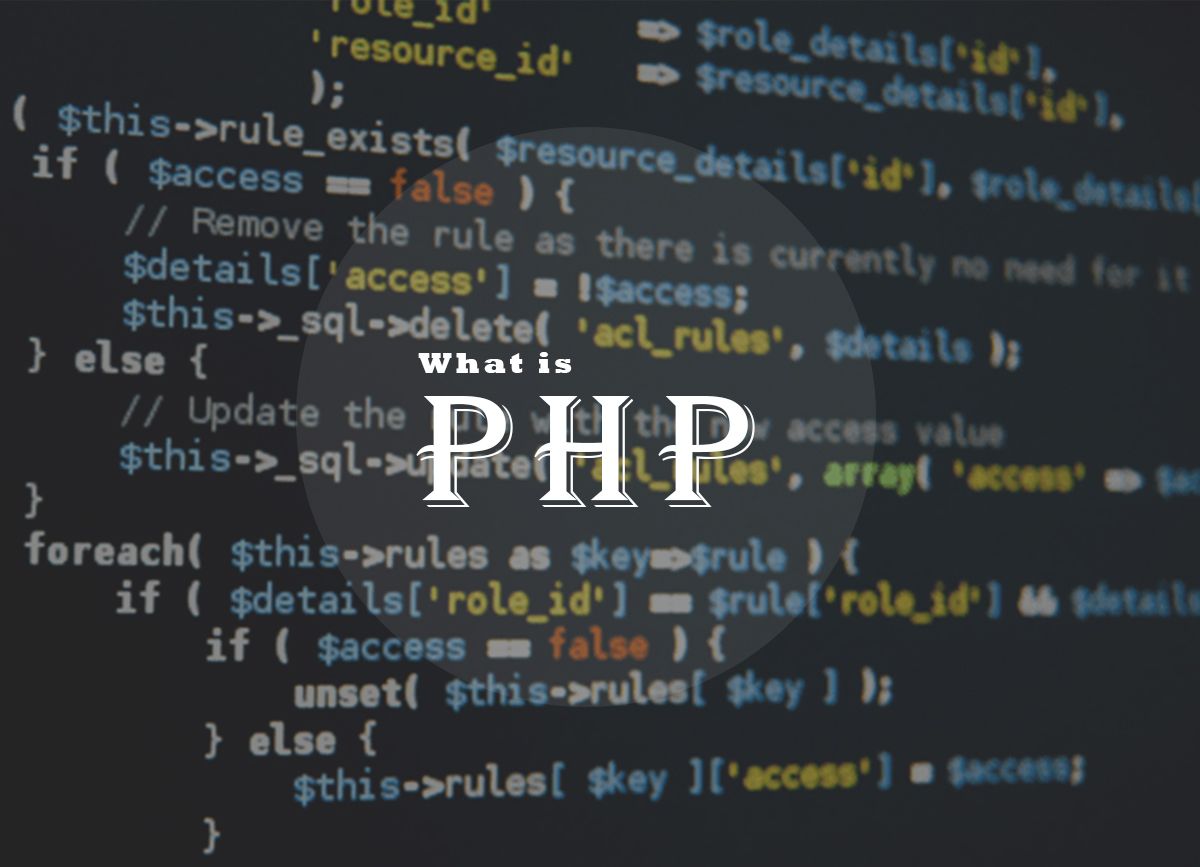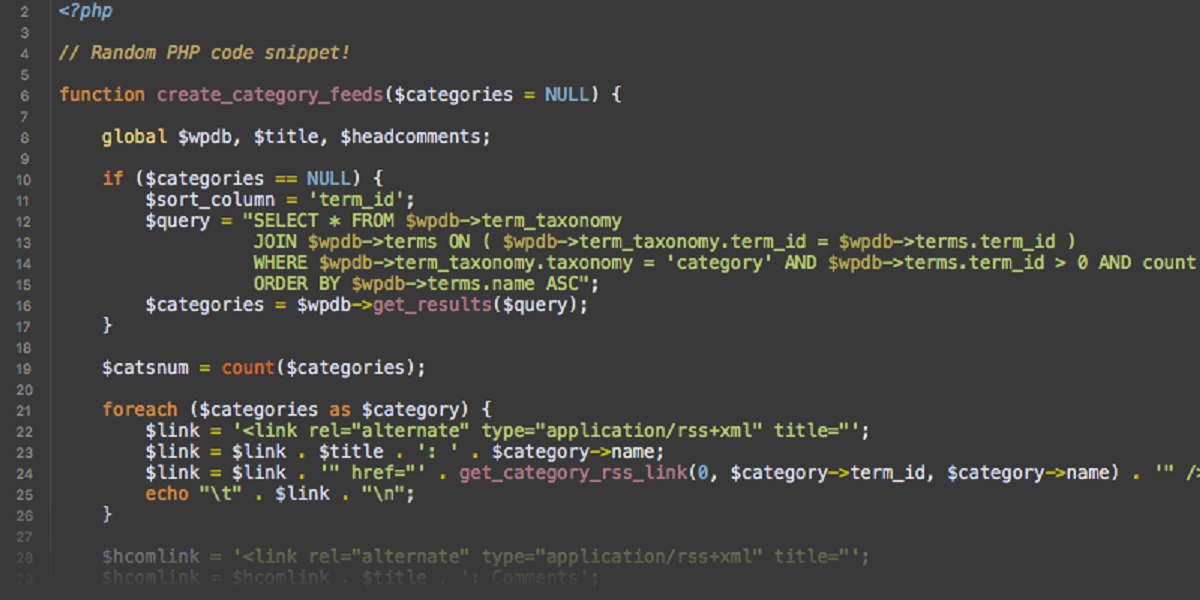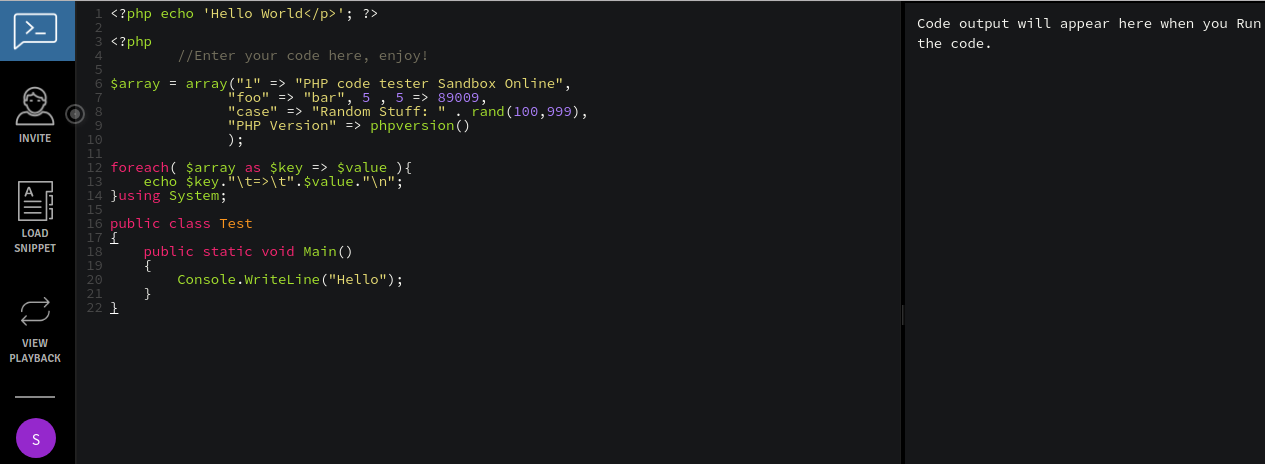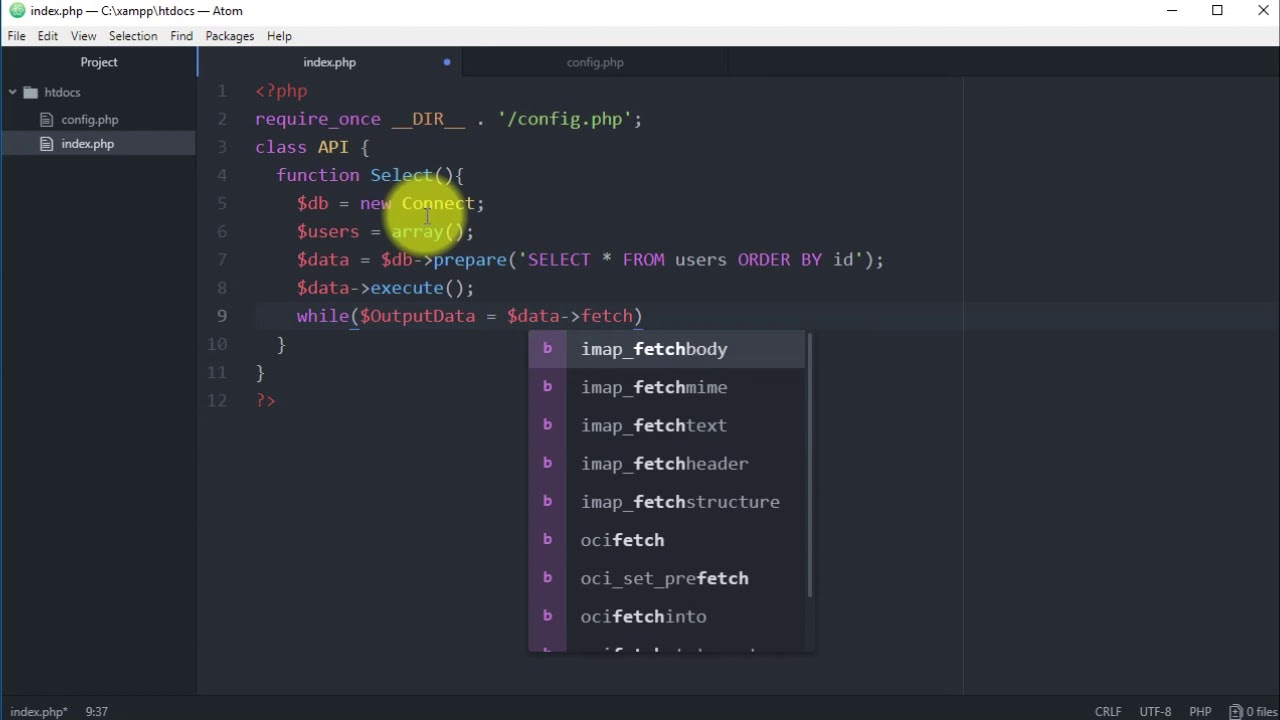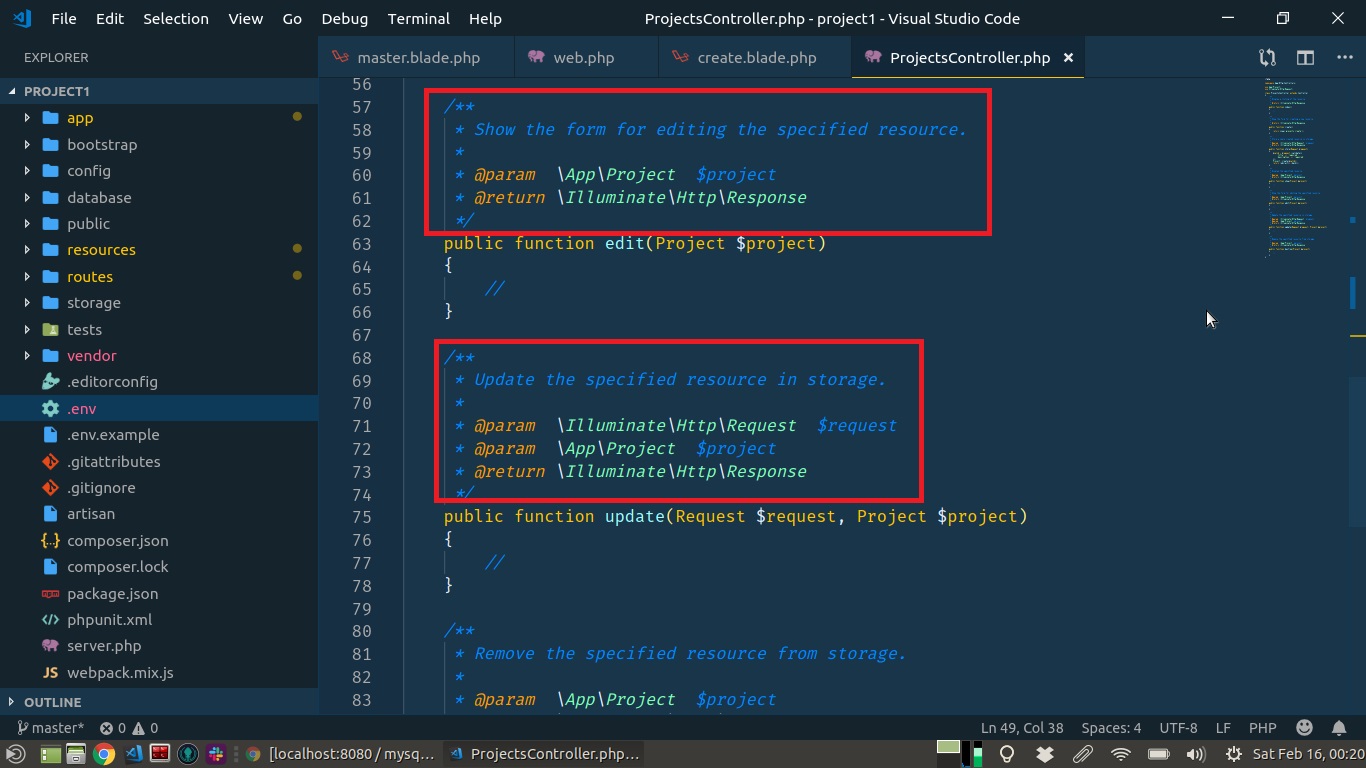Introduction
Welcome to the world of PHP! Whether you’re a budding web developer or an experienced programmer looking to expand your skill set, learning PHP is a wise decision. PHP, which stands for Hypertext Preprocessor, is a server-side scripting language that is widely used for web development.
With PHP, you can create dynamic web pages, handle form data, interact with databases, and much more. It is flexible, easy to learn, and has a vast community of developers who continuously contribute to its growth and improvement.
In this article, we will explore the basics of PHP and take a closer look at its key features and functionalities. By the end of this guide, you will have a solid understanding of PHP and be ready to embark on your journey to becoming a proficient PHP developer.
But before we dive into the nitty-gritty of PHP, let’s address the burning question on your mind – how long will it take to learn PHP? The answer to this question depends on several factors, including your prior programming experience, the amount of time you dedicate to learning, and the resources you use.
For beginners with no prior programming experience, it usually takes anywhere from a few weeks to a few months to become proficient in PHP. This estimate assumes that you spend a few hours each day learning and practicing PHP concepts.
However, if you already have experience with programming languages like Python or JavaScript, learning PHP should be relatively quicker. Since PHP shares similarities with other scripting languages, you can leverage your existing knowledge to grasp PHP concepts faster.
Furthermore, the resources you choose can significantly impact your learning speed. There are numerous online tutorials, courses, and documentation available that cater to different learning styles and levels of expertise. Selecting the right resources that align with your preferred learning method can expedite your learning process.
It’s important to note that learning PHP is an ongoing process. As with any programming language, the more you practice and build projects, the better you become. So, even after you have covered the basics, don’t shy away from exploring advanced topics, experimenting with real-world scenarios, and participating in coding communities to enhance your skills.
In the following sections, we will delve into the fundamental concepts of PHP, such as variables and data types, control structures, functions and loops, arrays, object-oriented programming, file handling, database connectivity, debugging, and popular PHP frameworks. Each of these topics is essential for harnessing the full potential of PHP and will provide you with the necessary tools to create powerful and dynamic web applications.
So, without further ado, let’s dive into the exciting world of PHP and explore all it has to offer!
The Basics of PHP
Before you start writing PHP code, it’s essential to understand the foundational elements of the language. In this section, we will cover the basics of PHP syntax, variables, operators, and comments.
PHP code is typically embedded within HTML markup. To indicate the beginning and end of PHP code, you need to use specific tags. The opening tag is <?php, and the closing tag is ?>. For example:
<?php
// PHP code goes here
?>
Variables are used to store data that can be used and manipulated throughout your PHP script. In PHP, variable names start with a dollar sign ($) followed by the name of the variable. Here’s an example:
$name = "John Smith";
$age = 25;
PHP supports various data types, including integers, floats, strings, booleans, and more. Type declarations are not required in PHP, unlike some other programming languages. PHP automatically assigns the appropriate data type based on the value assigned to the variable.
To concatenate strings in PHP, you use the period (.) operator. This allows you to combine two or more strings together. For example:
$firstName = "John";
$lastName = "Smith";
$fullName = $firstName . " " . $lastName;
PHP also provides a range of operators for performing arithmetic, assignment, comparison, logical, and other operations. Understanding these operators is crucial for manipulating and evaluating data in your PHP code.
To make your code more readable and maintainable, it’s important to add comments. Comments in PHP can be single-line or multi-line and are ignored by the PHP interpreter. They serve as notes or explanations for yourself or other developers who may work with your code.
// This is a single-line comment
/*
This is a multi-line comment
It can span multiple lines
*/
By mastering these basic concepts, you have laid a solid foundation for your PHP journey. With a good understanding of PHP syntax, variables, operators, and comments, you are ready to move on to more advanced topics.
Variables and Data Types
In PHP, variables are used to store and manipulate data. They provide a way to refer to a memory location that holds a value. Understanding variables and data types is fundamental to effectively work with PHP.
To declare a variable in PHP, you simply assign a value to it using the assignment operator (=). For example:
$name = "John";
$age = 25;
$isStudent = true;
PHP is a loosely typed language, which means you don’t need to explicitly declare the data type of a variable. PHP automatically determines the data type based on the value assigned to it.
PHP supports various data types, including:
- Integers: Used to represent whole numbers, such as -3, 0, or 100.
- Floats: Used to represent decimal numbers, such as 3.14 or -2.5.
- Strings: Used to represent sequences of characters, enclosed in single quotes (”) or double quotes (“”).
- Booleans: Used to represent true or false values.
- Arrays: Used to store multiple values in a single variable.
- Objects: Used to create custom data types and define their properties and methods.
- NULL: Used to represent the absence of a value.
PHP also provides typecasting, which allows you to convert variables from one data type to another. For example, you can convert an integer to a string or a string to an integer. This can be done using various PHP functions, such as strval() or intval().
It’s important to note that PHP variables are case-sensitive. So, $name and $Name are considered as two different variables.
In addition to the basic data types, PHP also supports composite data types like arrays and objects. Arrays allow you to store multiple values in a single variable, while objects allow you to create complex data structures with properties and methods.
To access the value stored in a variable, you simply refer to its name. For example, to display the value of the $name variable, you can use the echo statement:
$name = "John";
echo $name; // Output: John
Understanding variables and data types is crucial for manipulating and working with data effectively in PHP. Utilize the various data types and harness the power of typecasting to create dynamic and interactive web applications.
Control Structures
In PHP, control structures allow you to control the flow of execution within your code. They enable you to make decisions, repeat blocks of code, and perform different actions based on specific conditions. Understanding control structures is essential for creating dynamic and interactive PHP applications.
One of the most commonly used control structures in PHP is the if-else statement. It allows you to execute different blocks of code based on certain conditions. Here’s an example:
$age = 25;
if ($age < 18) {
echo "You are underage.";
} else {
echo "You are eligible to vote.";
}
In the above example, the code checks if the variable $age is less than 18. If it is, it prints “You are underage.” Otherwise, it prints “You are eligible to vote.”
PHP also provides the elseif keyword, which allows you to add additional conditions to your if-else statements. This is useful when you need to test multiple conditions. Here’s an example:
$score = 75;
if ($score < 60) {
echo "You failed the exam.";
} elseif ($score < 80) {
echo "You got a B grade.";
} else {
echo "Congratulations! You got an A grade.";
}
In addition to the if-else statement, PHP provides other control structures like switch statements, while loops, for loops, and foreach loops.
A switch statement allows you to perform different actions based on multiple possible values of a single variable. It provides a clean and concise way to write multiple if-else conditions. Here’s an example:
$day = "Monday";
switch ($day) {
case "Monday":
echo "Today is Monday.";
break;
case "Tuesday":
echo "Today is Tuesday.";
break;
// Add more cases for other days
default:
echo "Invalid day.";
}
Loops are used to iterate over a block of code multiple times. A while loop executes a block of code as long as a specified condition is true. A for loop executes a block of code for a specified number of times. A foreach loop is used to iterate over the elements of an array or an object. Here are some examples:
$count = 0;
while ($count < 5) {
echo $count;
$count++;
}
for ($i = 0; $i < 5; $i++) {
echo $i;
}
$fruits = ["apple", "banana", "orange"];
foreach ($fruits as $fruit) {
echo $fruit;
}
By mastering control structures, you have the power to write dynamic and responsive PHP code. Control structures allow you to handle different scenarios and make your code more efficient and interactive.
Functions and Loops
Functions and loops are essential building blocks in PHP that help in organizing code and performing repetitive tasks efficiently. Understanding how to use functions and loops can greatly enhance your productivity as a PHP developer.
Functions allow you to encapsulate a block of code that can be reused throughout your application. They help in modularizing your code, improving code readability, and promoting code reusability. Here’s an example of a simple PHP function:
function greet() {
echo "Hello, world!";
}
// Call the function
greet();
In the above example, we define a function named greet() that simply echoes the message “Hello, world!”. Calling the function by its name executes the code within the function body, resulting in the message being displayed.
Functions can also accept parameters, allowing you to pass data to the function for processing. Here’s an example:
function greetWithName($name) {
echo "Hello, " . $name . "!";
}
// Call the function with a parameter
greetWithName("John");
In the above example, the function greetWithName() accepts a parameter $name and concatenates it with the “Hello, ” message. When calling the function and passing “John” as the argument, it displays the personalized greeting “Hello, John!”
Loops, on the other hand, allow you to repeat a block of code multiple times until a certain condition is met. The most commonly used loops in PHP are the while loop, for loop, and foreach loop.
The while loop executes a block of code as long as a specified condition is true. Here’s an example:
$count = 0;
while ($count < 5) {
echo $count;
$count++;
}
In the above example, the code inside the while loop executes repeatedly until the value of the $count variable reaches 5. It displays the numbers 0, 1, 2, 3, and 4.
The for loop is used when you know the number of iterations in advance. It consists of three parts: initialization, condition, and increment/decrement. Here’s an example:
for ($i = 0; $i < 5; $i++) {
echo $i;
}
In the above example, the for loop executes 5 times, displaying the numbers 0, 1, 2, 3, and 4.
The foreach loop is used to iterate over the elements of an array or an object. It simplifies the process of iterating through arrays. Here’s an example:
$fruits = ["apple", "banana", "orange"];
foreach ($fruits as $fruit) {
echo $fruit;
}
In the above example, the foreach loop iterates over the elements of the $fruits array and assigns each element to the $fruit variable. It displays the names of the fruits: apple, banana, and orange.
By mastering functions and loops, you have powerful tools in your PHP arsenal. Functions help in organizing and reusing code, while loops allow for efficient repetition and iteration, enabling you to build robust and dynamic PHP applications.
Arrays
Arrays are fundamental data structures in PHP that allow you to store multiple values in a single variable. They provide a convenient way to organize and manipulate related data efficiently. Understanding arrays is crucial for working with complex datasets and creating dynamic PHP applications.
In PHP, there are three main types of arrays: indexed arrays, associative arrays, and multidimensional arrays.
An indexed array is a collection of values that are accessed using numeric indices. The indices start from 0 and increment by 1 for each element in the array. Here’s an example:
$fruits = ["apple", "banana", "orange"];
echo $fruits[0]; // Output: apple
In the above example, we define an indexed array called $fruits that contains three elements. Accessing the element using $fruits[0] returns the value “apple”.
An associative array is a collection of values that are accessed using keys instead of numeric indices. Each element in the associative array consists of a key-value pair. Here’s an example:
$student = [
"name" => "John",
"age" => 20,
"grade" => "A"
];
echo $student["name"]; // Output: John
In the above example, we define an associative array called $student that contains information about a student. Accessing the element using $student["name"] retrieves the value “John”.
A multidimensional array is an array that contains other arrays as elements. This allows you to represent complex data structures and hierarchies. Here’s an example:
$matrix = [
[1, 2, 3],
[4, 5, 6],
[7, 8, 9]
];
echo $matrix[1][2]; // Output: 6
In the above example, we define a multidimensional array called $matrix that represents a 3×3 matrix. Accessing the element using $matrix[1][2] returns the value 6.
PHP provides numerous built-in functions for manipulating arrays. These functions allow you to add or remove elements, sort arrays, search for values, and more. Some commonly used array functions include array_push(), array_pop(), array_sort(), and array_search().
Arrays are versatile and powerful data structures in PHP that allow you to work with collections of values effectively. Whether you need to store a list of names, manage complex data structures, or handle form submissions, arrays provide a flexible solution.
Object-Oriented Programming
Object-Oriented Programming (OOP) is a programming paradigm that revolves around the concept of objects. It allows you to create reusable, modular, and maintainable code by organizing data and behavior into self-contained units. PHP is a versatile language that fully supports OOP principles.
In OOP, objects are instances of classes, which serve as blueprints or templates for creating objects. A class defines the properties (attributes) and behaviors (methods) that an object can have. Here’s an example of a simple class in PHP:
class Person {
private $name;
private $age;
public function __construct($name, $age) {
$this->name = $name;
$this->age = $age;
}
public function greet() {
echo "Hello, my name is ". $this->name . " and I am " . $this->age . " years old.";
}
}
// Create an object of the Person class
$person = new Person("John", 25);
// Call the greet method
$person->greet(); // Output: Hello, my name is John and I am 25 years old.
In the above example, we define a class called Person that has two private properties: $name and $age. The class also has a constructor method (__construct) that initializes the properties when creating an object. The greet method displays a personalized greeting using the properties of the object.
OOP in PHP provides several key features, including:
- Inheritance: Classes can inherit properties and methods from other classes. This promotes code reuse and allows for the creation of hierarchical relationships between classes.
- Encapsulation: Classes can encapsulate data and behavior, preventing direct access to the internal state of an object. Access to properties is done through getter and setter methods, ensuring proper data manipulation and protection.
- Polymorphism: Objects of different classes can be treated as instances of a common superclass. This allows for more flexibility and extensibility in code design and functionality.
OOP promotes code organization, improves code readability, and makes it easier to maintain and update your PHP applications. By utilizing classes and objects, you can create modular and reusable code, which leads to increased efficiency and productivity.
File Handling and Database Connectivity
File handling and database connectivity are crucial aspects of PHP development, allowing you to interact with external data sources and store information persistently. PHP provides a wide range of functions and extensions that simplify file operations and enable seamless database connectivity.
PHP offers several built-in functions for handling files, such as creating, reading, writing, and deleting files. Here’s an example of reading the contents of a file:
$file = "data.txt";
$content = file_get_contents($file);
echo $content;
In the above example, we use the file_get_contents() function to read the contents of the file named “data.txt”. The contents are then stored in the $content variable and displayed using the echo statement.
PHP also provides functions for writing content to files, appending data, and performing file-related operations like renaming and deleting. These file handling functions make it easy to manage and manipulate files within your PHP applications.
In addition to file handling, PHP has built-in extensions for connecting to databases, such as MySQL, PostgreSQL, and SQLite, among others. These extensions allow you to execute SQL queries, retrieve data, insert records, update information, and more.
Here’s an example of establishing a connection to a MySQL database and executing a query:
$host = "localhost";
$username = "root";
$password = "password";
$database = "my_database";
// Create a connection
$conn = mysqli_connect($host, $username, $password, $database);
// Check if the connection is successful
if (!$conn) {
die("Connection failed: " . mysqli_connect_error());
}
// Execute a query
$sql = "SELECT * FROM users";
$result = mysqli_query($conn, $sql);
// Process the query result
if (mysqli_num_rows($result) > 0) {
while ($row = mysqli_fetch_assoc($result)) {
echo "Name: " . $row["name"] . ", Email: " . $row["email"];
}
} else {
echo "No records found.";
}
// Close the connection
mysqli_close($conn);
In the above example, we establish a connection to a MySQL database and execute a query to retrieve data from the “users” table. The results are then processed using a loop, and the desired information is displayed. Finally, the connection is closed using the mysqli_close() function.
By utilizing PHP’s file handling functions and database connectivity extensions, you can seamlessly interact with external data sources, read and write files, and perform database operations effectively.
Debugging and Error Handling
Debugging and error handling are essential skills for every PHP developer. When writing code, it’s common to encounter errors or unexpected behavior. PHP provides a variety of tools and techniques that can help you identify and fix issues in your code.
One of the most basic techniques for debugging in PHP is to use the var_dump() function, which displays the contents and structure of a variable. This can be useful for inspecting the values assigned to variables, identifying data types, and pinpointing logical errors.
$name = "John";
$age = 25;
var_dump($name); // Output: string(4) "John"
var_dump($age); // Output: int(25)
In the above example, var_dump() is used to display the values and data types of the $name and $age variables. This can assist in confirming whether the variables have been assigned the expected values.
Another powerful debugging technique is to use error reporting in PHP. By enabling error reporting, PHP will display any errors, warnings, or notices that occur during the execution of your code. This can be done by including the following line at the beginning of your PHP script:
error_reporting(E_ALL);
Enabling error reporting helps identify syntax errors, uninitialized variables, and other issues that may prevent your code from running correctly.
PHP also provides exception handling, which allows you to catch and handle errors in a controlled manner. By using the try-catch structure, you can anticipate potential errors and specify how your code should react when those errors occur.
try {
// Code that may throw an exception
} catch (Exception $e) {
// Error handling code
}
In the example above, the code within the try block is executed. If an exception is thrown, the code jumps to the corresponding catch block, allowing you to handle the error appropriately, such as logging the error or displaying a user-friendly message.
Furthermore, PHP provides functions like error_reporting(), ini_set(), and debug_backtrace() that assist in fine-tuning error reporting settings and gaining insights into the execution flow of your code. These functions can be invaluable when troubleshooting complex issues.
By familiarizing yourself with debugging techniques, enabling error reporting, and utilizing exception handling, you can ensure that your PHP code is robust and free from critical errors.
Popular PHP Frameworks
PHP frameworks are powerful tools that provide a foundation for building web applications efficiently and following best practices. These frameworks come with a set of pre-built libraries, tools, and conventions that simplify the development process and promote code reusability. Here are some of the most popular PHP frameworks:
- Laravel: Laravel is one of the most widely used PHP frameworks. It is known for its elegant syntax and comprehensive feature set, including a robust ORM (Object-Relational Mapping), authentication, routing, and caching. Laravel follows the MVC (Model-View-Controller) architectural pattern, making it suitable for developing large-scale web applications.
- Symfony: Symfony is a mature and highly extensible PHP framework. It provides a modular architecture, allowing developers to choose the specific components they need. Symfony focuses on reusable components, testability, and performance. It also implements the MVC pattern and offers a rich ecosystem of plugins and extensions.
- CodeIgniter: CodeIgniter is a lightweight and beginner-friendly PHP framework. It offers a small footprint and straightforward configuration, making it ideal for small to medium-sized projects. CodeIgniter prioritizes simplicity and ease of use without sacrificing performance or essential features.
- Yii: Yii is a high-performance PHP framework designed for developing modern web applications. It follows the principle of DRY (Don’t Repeat Yourself) and promotes rapid application development. Yii offers features like caching, authentication, security measures, and seamless integration with third-party libraries.
- Zend Framework: Zend Framework is a powerful, enterprise-grade PHP framework that focuses on flexibility, reliability, and security. It provides a diverse set of components that can be used individually or combined to create custom web applications. Zend Framework follows industry best practices and is well-suited for complex, enterprise-level projects.
Each PHP framework has its own strengths, weaknesses, and specific use cases. The choice of framework depends on the requirements of your project, your familiarity with the framework, community support, and the scalability you need.
Using a PHP framework can significantly speed up the development process, enhance code structure, and improve maintainability. It also offers a variety of additional features like routing, database abstraction, and form validation, allowing you to focus more on the unique aspects of your application.
Ultimately, the choice of the PHP framework depends on your project’s requirements and your personal preferences as a developer. It’s always beneficial to explore and experiment with different frameworks to identify the one that best suits your needs!
Conclusion
In conclusion, learning and mastering PHP can open up a world of possibilities for web development. PHP is a widely used and versatile server-side scripting language that allows you to create dynamic and interactive web applications efficiently.
In this guide, we covered the fundamentals of PHP, including variables and data types, control structures, functions and loops, arrays, object-oriented programming, file handling, and database connectivity. These foundational concepts provide a solid basis for building robust PHP applications.
Additionally, we explored popular PHP frameworks such as Laravel, Symfony, CodeIgniter, Yii, and Zend Framework. These frameworks offer a range of features, tools, and libraries that can streamline your development process and enhance code quality.
Remember, learning PHP is an ongoing process. Continuously updating your skills, keeping up with the latest PHP trends and best practices, and engaging with the PHP developer community will help you stay at the forefront of web development.
Whether you are a beginner starting your PHP journey or an experienced developer looking to expand your skillset, the key is to practice and build real-world projects. By applying your knowledge and experimenting with code, you will gain confidence and proficiency in PHP.
So, take this guide as a starting point, explore further, and immerse yourself in the exciting world of PHP. Happy coding!









